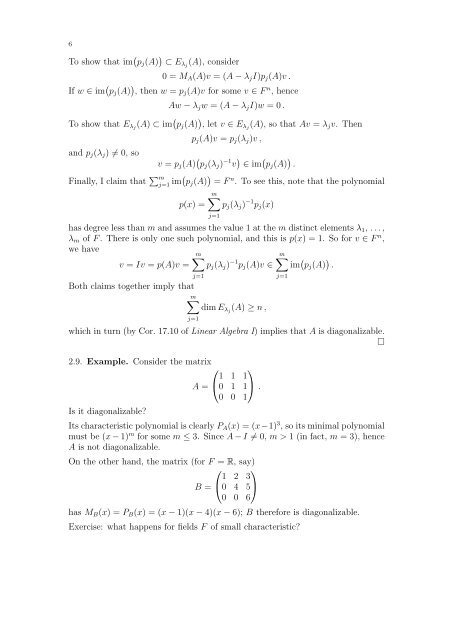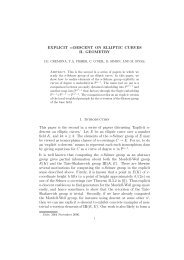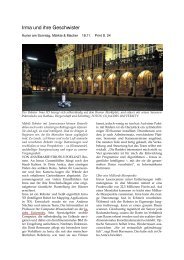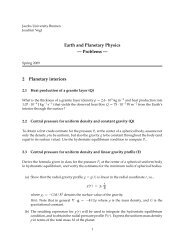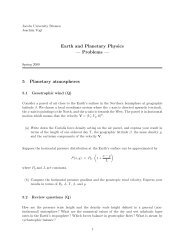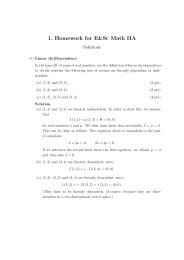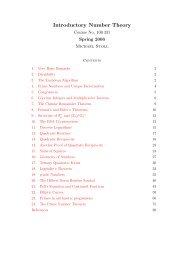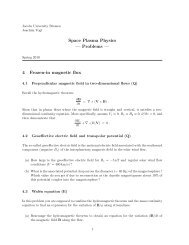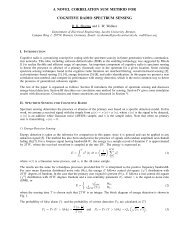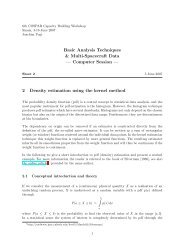Linear Algebra II (pdf, 500 kB)
Linear Algebra II (pdf, 500 kB)
Linear Algebra II (pdf, 500 kB)
Create successful ePaper yourself
Turn your PDF publications into a flip-book with our unique Google optimized e-Paper software.
6<br />
To show that im pj(A) ⊂ Eλj (A), consider<br />
0 = MA(A)v = (A − λjI)pj(A)v .<br />
If w ∈ im pj(A) , then w = pj(A)v for some v ∈ F n , hence<br />
Aw − λjw = (A − λjI)w = 0 .<br />
To show that Eλj (A) ⊂ im pj(A) , let v ∈ Eλj (A), so that Av = λjv. Then<br />
and pj(λj) = 0, so<br />
pj(A)v = pj(λj)v ,<br />
v = pj(A) pj(λj) −1 v ∈ im pj(A) .<br />
Finally, I claim that m j=1 impj(A) = F n . To see this, note that the polynomial<br />
m<br />
p(x) = pj(λj) −1 pj(x)<br />
j=1<br />
has degree less than m and assumes the value 1 at the m distinct elements λ1, . . . ,<br />
λm of F . There is only one such polynomial, and this is p(x) = 1. So for v ∈ F n ,<br />
we have<br />
m<br />
v = Iv = p(A)v = pj(λj) −1 m<br />
pj(A)v ∈ im pj(A) .<br />
j=1<br />
Both claims together imply that<br />
m<br />
dim Eλj (A) ≥ n ,<br />
j=1<br />
which in turn (by Cor. 17.10 of <strong>Linear</strong> <strong>Algebra</strong> I) implies that A is diagonalizable.<br />
<br />
2.9. Example. Consider the matrix<br />
⎛<br />
1<br />
A = ⎝0 1<br />
1<br />
⎞<br />
1<br />
1⎠<br />
.<br />
0 0 1<br />
Is it diagonalizable?<br />
Its characteristic polynomial is clearly PA(x) = (x−1) 3 , so its minimal polynomial<br />
must be (x − 1) m for some m ≤ 3. Since A − I = 0, m > 1 (in fact, m = 3), hence<br />
A is not diagonalizable.<br />
On the other hand, the matrix (for F = R, say)<br />
⎛ ⎞<br />
1 2 3<br />
B = ⎝0 4 5⎠<br />
0 0 6<br />
has MB(x) = PB(x) = (x − 1)(x − 4)(x − 6); B therefore is diagonalizable.<br />
Exercise: what happens for fields F of small characteristic?<br />
j=1


